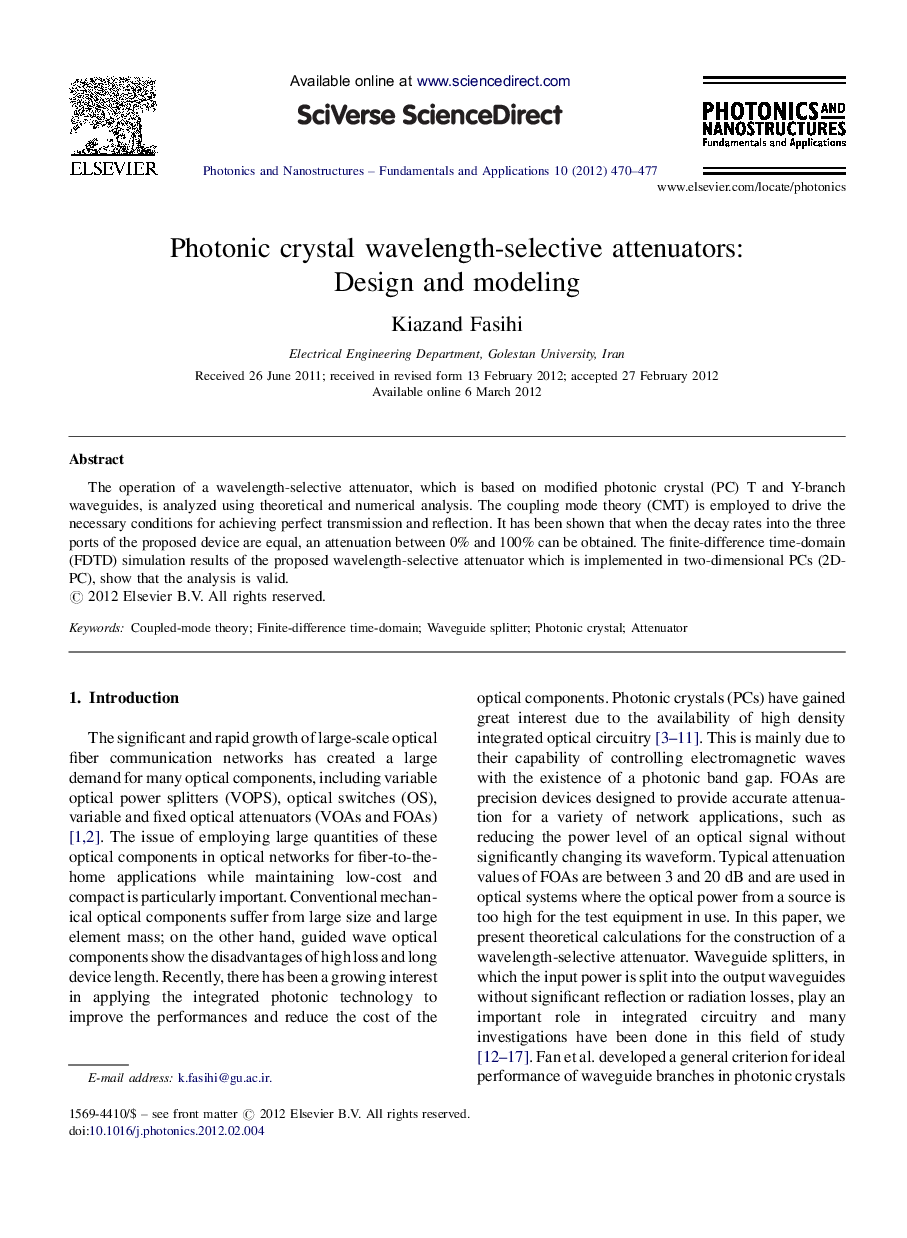| Article ID | Journal | Published Year | Pages | File Type |
|---|---|---|---|---|
| 1543346 | Photonics and Nanostructures - Fundamentals and Applications | 2012 | 8 Pages |
Abstract
The operation of a wavelength-selective attenuator, which is based on modified photonic crystal (PC) T and Y-branch waveguides, is analyzed using theoretical and numerical analysis. The coupling mode theory (CMT) is employed to drive the necessary conditions for achieving perfect transmission and reflection. It has been shown that when the decay rates into the three ports of the proposed device are equal, an attenuation between 0% and 100% can be obtained. The finite-difference time-domain (FDTD) simulation results of the proposed wavelength-selective attenuator which is implemented in two-dimensional PCs (2D-PC), show that the analysis is valid.
Related Topics
Physical Sciences and Engineering
Materials Science
Electronic, Optical and Magnetic Materials
Authors
Kiazand Fasihi,
